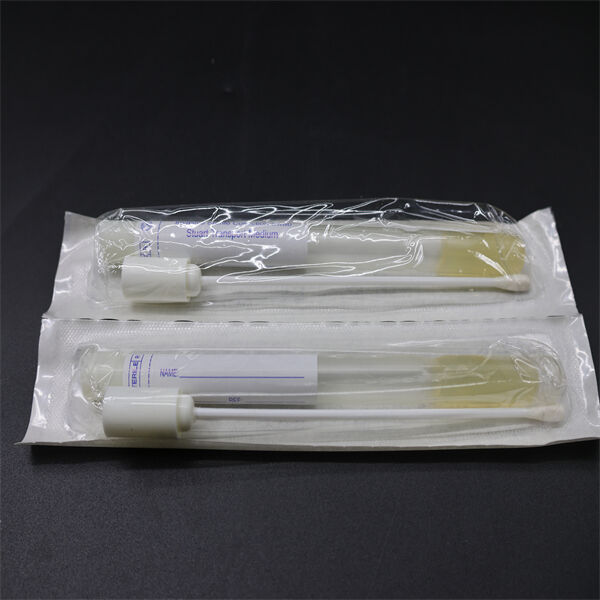Transportsvamper er nøkkelverktøy som lar forskere og leger hente ulike typer prøver fra kroppens kompartementer. Disse prøvene er veldig nyttige, fordi de lar doktorer vite hvordan vi føler oss, og hva det eventuelt kan være galt inne i kroppen vår. Denne artikkelen forklarer hva amies transportmedium de er og hvorfor de brukes, samt hvordan man bruker dem riktig for å få de mest nøyaktige resultater fra våre tester.
Hvis en lege trenger å teste et prøve fra kroppen din – som spytt eller mukus – bruker de et spesielt verktøy som kalles transportsvab. Dette svabet er kort og har en mer bløt topp. Den bløtte toppen er laget for å få tak i prøven enkelt uten å forårsake deg noen ubehag. Når svabet har samlet inn prøven, transporterer det den sikkert til et laboratorium hvor den kan bli testet. Hvis legene skal kunne få den viktige informasjonen de trenger for å holde oss friske og gjøre oss bedre uten transportsvaber, vil det være veldig vanskelig.
Hvordan en 15 ml sentrifugerør brukes: en trinnvis guide. Start med den bløte toppen av tamponen, og rubb mildt på det området de trenger et prøveuttag fra. Etter å ha samlet inn prøven, er det viktig at du ikke rører noe annet med tamponen. Dette holder tamponen ren og fri fra forurensning. Når du har din prøve, sett tamponen forsiktig tilbake i dens opprinnelige beholder, stopp den, og snurr locket godt fast. Denne trinnet er ekstremt viktig, da det bevarer prøvens integritet under transport til laboratoriet for analyse.

Transporttamponer tillater lagring, transport og bevarelse av biologiske prøver. Spesialtamponer brukes for å opprettholde en følsom prøve og forhindre skade. Dette er avgjørende fordi hvis prøven ikke lagres riktig, kan testresultatene være uakkurate. Når prøven når laboratoriet raskt og sikkert, kan leger få den informasjonen de trenger for å ta akkurate beslutninger om vår helse. Transporttamponer er nødvendige for akkurate tester og diagnoser.

Det er noen nøkkeltegn du bør se etter når du velger en transportsvamp, som vil sørge for at du velger den riktige. For det første bør svampen ha et bløtt og absorberende topp. Dette er viktig for å sikre at prøven blir riktig samlet inn. Deretter ser du om den har en trygg beholder for å beskytte prøven under transport. Det er også viktig å sørge for at svampen selv er laget av riktig materiale; den må være sterilt og fritt fra alle kjemikalier som kan påvirke prøven eller testen selv.

Riktig håndtering og lagring av transportsvamp er veldig viktig for å beskytte prøven og oppnå nøyaktige resultater. Du bør alltid begynne med å vaske hendene før du bruker svampen. Dette gjøres for å unngå eventuell kontaminasjon. Når du har tatt prøven, behold svampen i et kult, tørt sted til den kan sendes til laboratoriet. Forsikre deg om at du følger alle spesifikke instruksjoner som kommer med svampen. Disse veiledningene finnes for å hjelpe deg med å sikre at prøven du samlet inn beholdes intakt og at den er klar for testing.